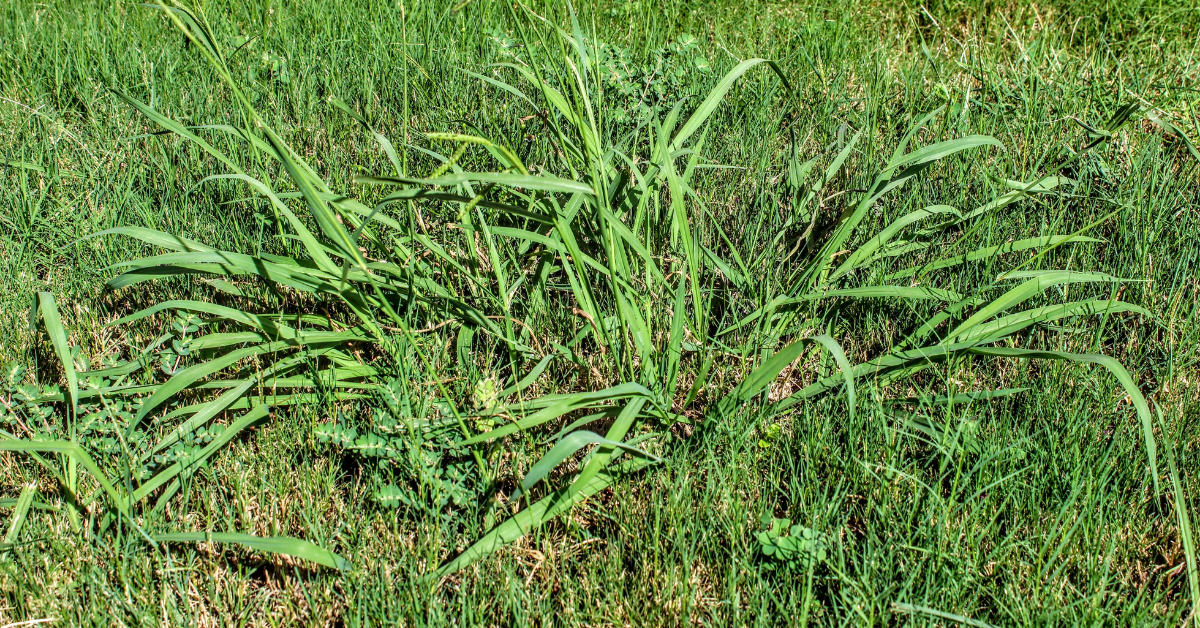
In the early spring, you will encounter a great many phone calls from customers that deal with the subject of crabgrass. Let’s look at a couple of frequent ones.
Q: It’s early spring and I’ve already got crabgrass in my lawn.
A: Not likely. Until the weather gets hot, crabgrass seedlings stay relatively small and inconspicuous in comparison to surrounding turf. When a customer says that it’s already growing, they are likely misidentifying the plant. Here are some common grass plants that are confused with crabgrass in the early spring:
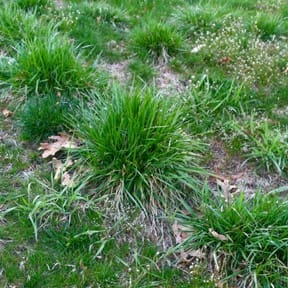
Tall Fescue: This is Tall Fescue, a coarse bladed and unsightly plant that grows in a wide swath of the United States. It is not controlled by our preemergent herbicides; indeed, there is little that can be done when it infests turf outside of a non-selective herbicide application or manual removal with a shovel. However, don’t confuse this with turf-type Tall Fescue, a desirable species that has many excellent qualities that we do look for in a turfgrass.
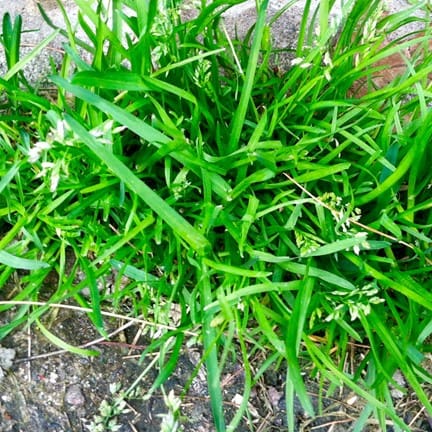
Poa annua: this is Poa annua, or Annual Bluegrass. It is apple green in color and will germinate early in the spring and seed prolifically. It is very common in lawns, forming patches that contrast with the desirable and darker surrounding turf.
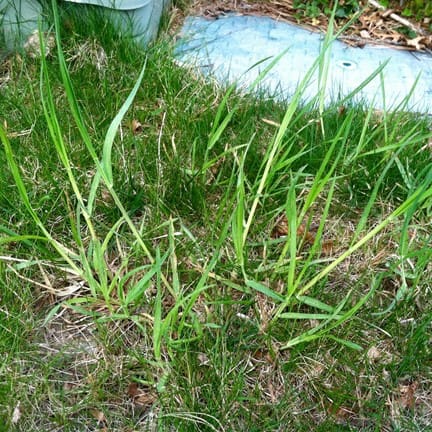
Poa trivialis, or Roughstalk Bluegrass can also be mistaken for crabgrass. It is a native plant that is light green in color and grows vigorously in the early spring. I have patches of it in my front lawn that will thrive when it’s cool but will quickly die back once the hot weather hits.
This is not an exhaustive list – there are lots of others too.
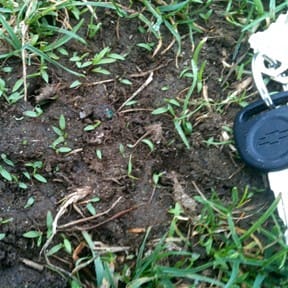
So what does crabgrass actually look like at this time of the year: this is crabgrass in the two to three-leaf stage – mid to late May in the Boston area. Notice that it is quite small. Due to the type of photosynthesis that it utilizes – which is very different than the type used by the cool-season turfgrasses like bluegrass, ryegrass, and fescue – crabgrass does not really ramp up its growth until it gets hot. Typically, we will begin to receive calls about real crabgrass problems right around when we get the first spike of temperatures in the nineties.
Q: The forsythia is blooming and if you don’t put the crabgrass control down right now, I’ll be surrounded with crabgrass this summer and I’m going to cancel!
A: This is the quintessential Old Farmer’s Almanac tale run amuck. There are many things to consider here, so let’s list them out.
People associate the bloom of forsythia with the timing of crabgrass control because there is a relationship that can be drawn between the two. Crabgrass seeds will germinate around two to three weeks after the forsythia blooms drop.
Associating the activity of a pest with observations of plants in the landscape is called plant phenology. In horticulture, we can measure the progress of plants based upon how much warmth has accumulated as days go by in units called Growing Degree Days (GDD). The forsythia bloom starts from 1 to 25 Growing Degree Days. Crabgrass germination begins at 200 GDD. You can see that there is a big difference there.
However, people have begun to associate the application of crabgrass control with the beginning of forsythia blooming. That is quite a bit different than two to three weeks after the blooms drop. What started out as “apply crabgrass control after the forsythia bloom drops” has morphed into “apply crabgrass control as soon as you see the forsythia start to bloom.” That’s a difference of over a month.
Here’s the problem: the crabgrass control that we apply has a half-life in the soil, meaning it will only work for a certain period of time. If we apply it too early, we may not have adequate control later in the season when we really need it to be there. I say “may” because there are many factors that come to bear on the quality of control we get from preemergent herbicides – the amount of rain, temperature, the thickness of the turfgrass stand, etc.
Customers will sometimes think that if the preemergent control isn’t applied on time that they will have a huge crabgrass problem all year. Remind them that we scout for crabgrass outbreaks in the lawn with each application and spot spray for them as we find them.
So, here’s the bottom line: patience. It’s a long season and it has just started. We have put together an excellent program that will give our customers the best lawn possible. Inform the customer that we understand the importance of good preemergent crabgrass control timing and that it is already first and foremost in our plan.
This article was published in the May/June issue of the magazine. To read more stories from The Landscape Professional magazine, click here to subscribe to the digital edition.

